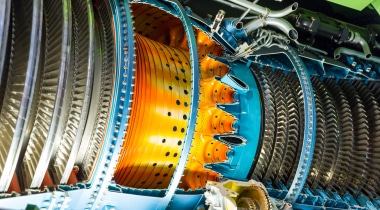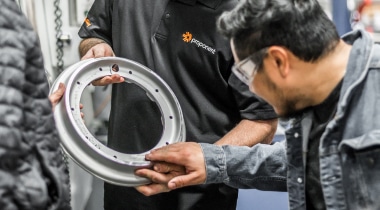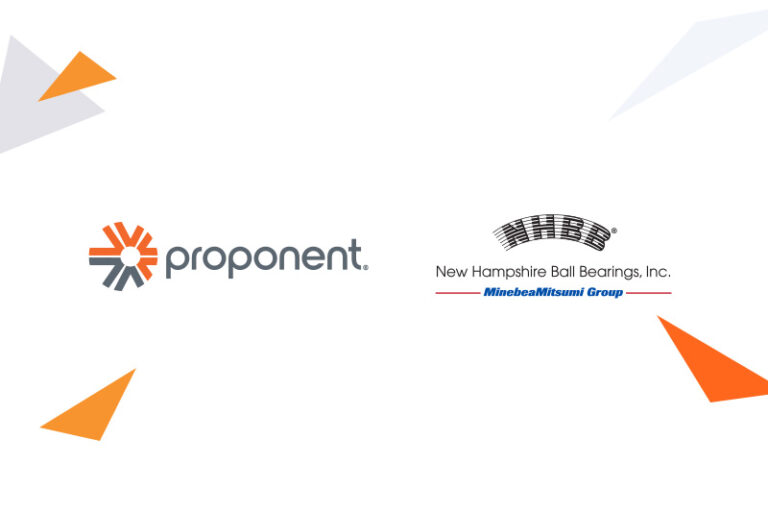The world’s first aircraft engine was a comparatively simple gasoline-powered, internal-combustion design. And while it provided enough power for the Wright brothers’ 1903 flyer to achieve the world’s first heavier than air, self-propelled flight, new advances in the burgeoning field of aviation quickly outpaced this rudimentary design. Today’s aircraft systems are significantly more complex. As such, repairs and maintenance demand more complex tools. Consider the borescope.
What Is a Borescope, and How Is it Used?
Borescopes are tools that allow users to visually inspect difficult-to-access areas within complex systems. The borescope usually consists of a long tube with a camera or magnifying lens on one end, and a display or eyepiece on the other. The borescope may be inserted into small spaces, providing the user with a visual image of the internal workings of the system, without time-consuming dismantling or dismounting.
Although borescopes are used throughout most industrial industries and even find application in medicine (in the form of endoscopes), borescope inspections are particularly important in aviation. An effective borescope inspection allows mechanics and maintenance personnel to visually assess the inner working of complex aircraft components. Borescopes are essential for monitoring engines, ventilation systems, gearboxes, heat exchange tubes, welds, and other mechanical parts.
Types of Borescopes in Aviation
While borescope inspections are standard procedure in aviation maintenance and repair, there are actually three different kinds of borescope currently in use. Each variety offers its own advantages.
Rigid Borescopes
The rigid borescope is a nonflexible tube containing a series of lenses. Although the rigid borescope only allows for straight-line access and cannot be bent around corners, it usually offers the best possible optical clarity.
Fiberscopes
Making use of advanced fiber-optics technology, fiberscopes are flexible enough to fit into nearly any space. The fiber optics provide eclectic illumination while carrying images back to the user.
Videoscopes
Combining the optical clarity of rigid borescopes with the flexibility of fiberscopes, videoscopes incorporate small video cameras. These video cameras provide high-quality visuals, and allow users to record images for later review. Videoscopes use borescope software that may need regular updates.
Choosing the Right Aviation Borescope
There’s a lot riding on regular borescope inspection. In fact, 90% of non-scheduled engine replacement is discovered using a borescope. Repair and maintenance teams depend on borescope technology to accurately assess potential problems and evaluate the integrity of complex aircraft components. As such, choosing the right borescope solution is absolutely vital.
When evaluating borescope options, here are four points to consider:
- Flexibility
If all you need access to is a straight-line area, then a rigid borescope can give you clear imagery without the increased cost of increased flexibility. However, if you’re going to be inspecting more difficult spaces, then a fiberscope or videscope may be a better solution. - Image Quality
Different borescope options offer different levels of picture quality. If you need to be able to identify small details, you should spring for a borescope with clearer, higher-quality images. Improved resolution, adjustable lighting, and zoomability may all have an impact on image detail. - Wire Length and Diameter
You’ll need your borescope to be able to reach the components you’re inspecting. This means estimating the distance the wire will have to travel. When in doubt, err on the side of caution; you’re better off having too much length than too little. At the same time, be aware of the diameter of the space the wire will have to fit through. The borescope will need to pass easily through the narrowest diameter of the inspection space, so a thinner wire may be preferable. However, a thinner borescope may result in lower picture quality or reduced durability. - Budget
Naturally, one of the biggest considerations will be cost. As you weigh your options, be aware of which areas are a higher priority. Spending more on certain features will help reduce costs in the long run if it means more-accurate borescope inspections.
Interested in learning more about aviation technologies and solutions? Proponent is here to help guide the way.



















